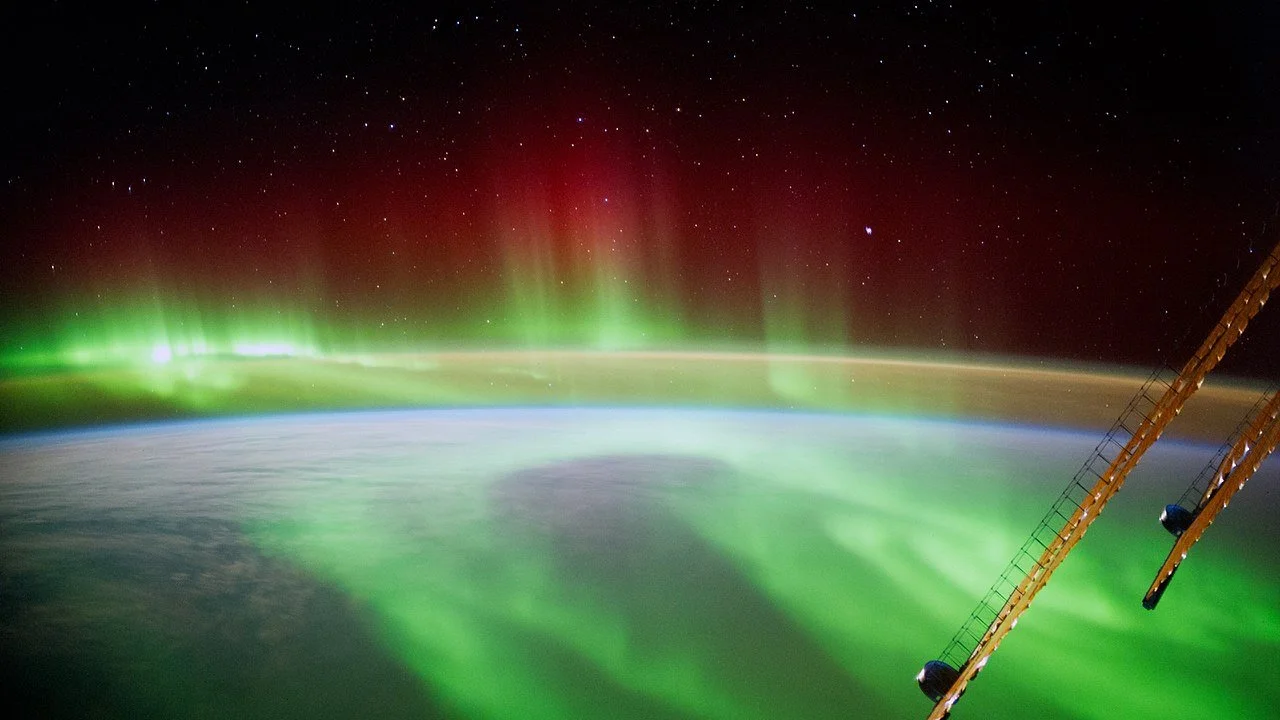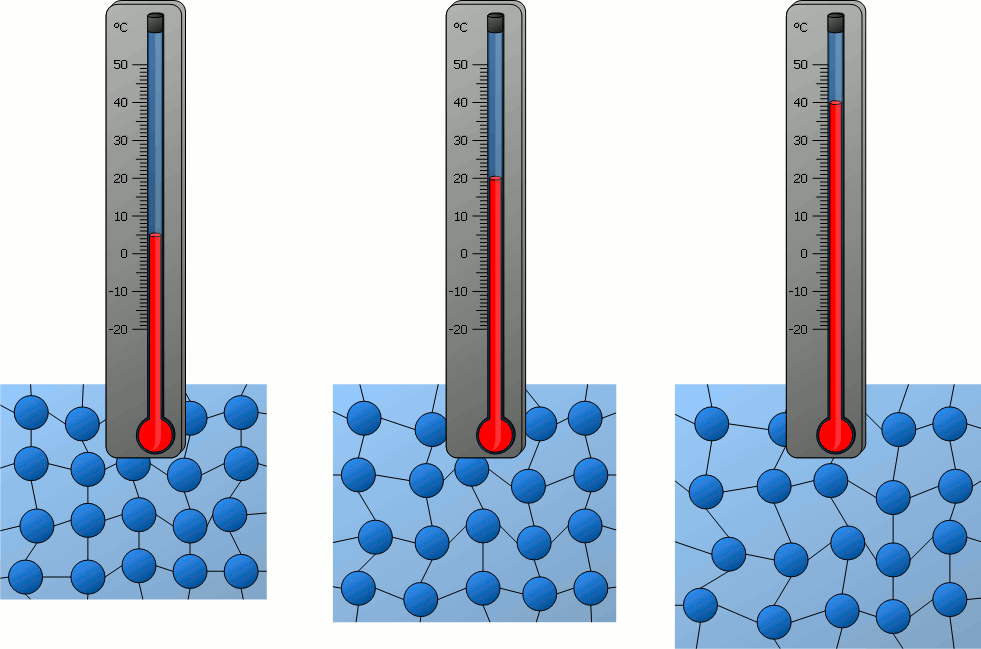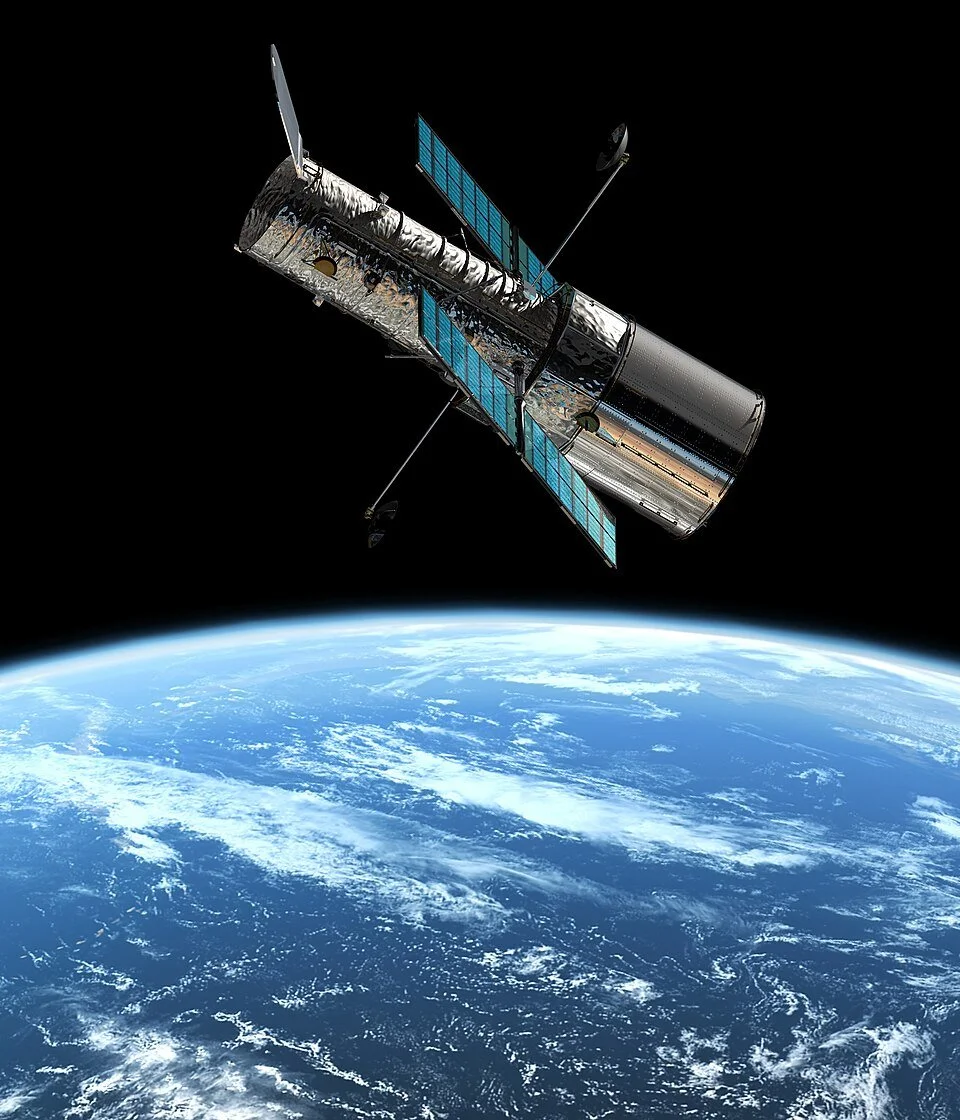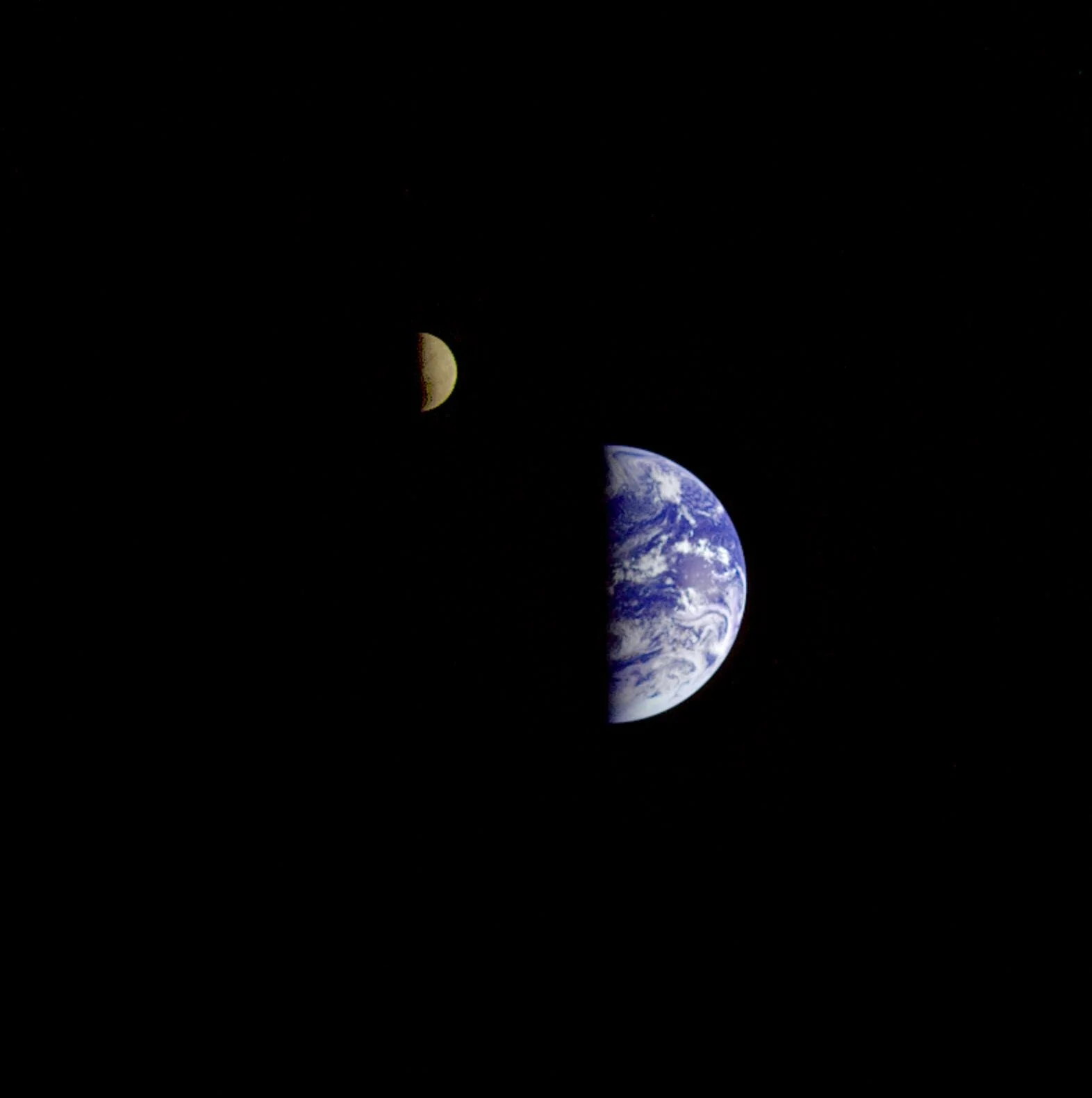What happens to the temperature of the atmosphere the higher you go?
The short answer
The higher you go in the atmosphere, the temperature either rises or falls depending on the layer. These changes are caused by how different parts of the atmosphere absorb energy from the Sun and how air pressure affects heat.
The long answer
Atmosphere. It's not only the key to a successful restaurant launch but also critical to supporting life on Earth. Our atmosphere is a mixture of gases that surrounds the planet, giving us the air we breathe and protecting us from the Sun's extreme radiation.
The atmosphere is comprised of five main layers, corresponding with how the temperature changes in each layer. Depending on each layer, temperature either increases or decreases with altitude.
Source: UCAR
Let's dig into how and why each atmospheric layer's temperature changes as altitude increases.
🌡️📉 Troposphere (0-10km): Temperature goes down
The troposphere is our home. Extending from Earth's surface to about 10km high, the troposphere is the wettest layer and contains roughly 75% of the atmosphere's total mass, mostly in the form of air molecules and water vapor.
As you go up in the troposphere, temperature will go down, reaching -60°F (-51°C) at the top. But hot air rises, right? Why does temperature decrease with altitude in the troposphere?
The primary source for air's heat in the troposphere is the Earth itself. As the Sun warms the rock, soil, and water, these surfaces emit heat. As the warm air rises, it gets further and further from this heat source, which cools it down.
Source: NOAA
Rising warm air also cools because the molecules spread farther apart due to a decrease in air pressure. The expansion of air requires energy, so the rising air becomes cooler and cooler.
🌍 Atmosphere fact: For every 1,000 feet you go up, the air temperature decreases by 3.6ºF (or 6.5ºC for every 1,000 meters).
🌡️📈 Stratosphere (~10-50km): Temperature goes up
The stratosphere is the next stop in our atmosphere. As you continue climbing from to the top of the stratosphere, the temperature rises all the way to roughly 32°F (0°C).
The heating in the stratosphere is thanks to the infamous ozone layer. Ozone (O₃) is a highly reactive gas made up of three oxygen atoms. It forms when sunlight's high-energy ultraviolet rays (UV-C) strike oxygen molecules (O₂), splitting them into two individual oxygen atoms (O).
The process by which UV rays and oxygen molecules continuously form and destroy ozone (O3). Source: NASA
These single oxygen atoms are highly reactive and quickly bond with O₂ to form ozone. When ozone absorbs UV-B radiation, it breaks apart again into O₂ and O.
The continuous creation and destruction of ozone absorbs UV radiation and releases heat, warming the stratosphere as you get closer to the Sun.
"Tm-ozone-layer-05092021svg" by Taha Mzoughi is licensed under CC BY-SA 4.0.
The ozone layer is why we're all alive. By absorbing so much of the Sun's high-energy UV rays, ozone protects us from the DNA-damaging effects of UV radiation (this is what causes sunburns).
🌍 Atmosphere fact: Airplanes often fly in the lower stratosphere because its thinner air provides a smoother, less turbulent ride and more efficient fuel consumption.
🌡️📉 Mesosphere (~50-85km): Temperature goes down
Moving on up, we arrive at the mesosphere. The coldest temperatures in Earth's atmosphere are found in this layer. Here the temperature goes down as you climb higher, dropping to -130°F (-90°C) at the top.
Shooting stars occur as meteors burn up in the mesosphere layer.
"Shooting star OCA" by Moini is part of the public domain.
Temperatures drop as you go up in the mesosphere because the air pressure is extremely low. In fact, 99.9% of the atmosphere's mass is below the mesosphere, which means gas molecules are spread very far apart. In this layer, there is much less ozone to absorb UV radiation so there is less heating.
The main heating source of the mesosphere comes from the stratosphere below. The higher you go in the mesosphere, the further away you are from the radiating heat of the stratosphere, which is why it gets colder.
🌍 Atmosphere fact: Because the pressure is so low in the mesosphere, your blood would boil at normal body temperature. Yikes!
🌡️📈 Thermosphere (~85-500km): Temperature goes up
Next stop: The thermosphere. As the name suggests, this is where things start heating up. Temperatures can reach as high as 3,600°F (2,000°C) at the top of the thermosphere.
The aurora borealis effect happens in the thermosphere layer.
"Space Aurora ESA321897" by European Space Agency is licensed under CC BY-SA 3.0 IGO.
In this layer, high-energy X-rays and extreme UV radiation from the Sun are absorbed by sparse gas molecules. These photons carry much more energy than visible light or UV-A light, so the temperature spikes to hundreds, even thousands, of degrees.
Still, you'd be wise to bring a sweater. While the temperatures reach astounding levels in the thermosphere, it would feel freezing cold.
Here's why: Temperature measures the average kinetic energy of particles. The atoms that make up matter are always vibrating, and how quickly they vibrate is measured as temperature.
Source: TecScience
But in the thermosphere, gas molecules are spread so far apart (one molecule can go about 1 km before it collides with another) that not enough would hit our skin in order for us to feel the heat.
🌍 Atmosphere fact: The conventional (but not universally accepted) boundary between our atmosphere and outer space is found in the thermosphere. At an altitude of about 62 miles (100 km), the Kármán Line is used to delineate between aircraft and spacecraft.
🌡️📈 Exosphere (~500-10,000km+): Temperature goes up
While the atmosphere doesn't abruptly end at any point (the air just gets thinner and thinner), many scientists consider the exosphere as its outermost layer. NASA says it ends at about 10,000 km, other authorities say it ends halfway to the moon (~190,000 km).
The Hubble Space Telescope orbits in the exosphere.
"The Hubble Space Telescope in orbit" by Hubble ESA is licensed by CC BY 2.0.
Similar to the thermosphere, the exosphere is on the front lines of the Sun's high-energy rays. So the further you go up, the hotter it technically is, reaching over 3,600°F (2,000°C) depending on solar activity. But with even fewer gas molecules, it would still feel outrageously cold.
🌍 Atmosphere fact: The air is so thin in the exosphere that a single atom can drift hundreds of kilometers before bumping into another.
🌡️❓ Outer space: Temperature doesn't really exist
Now we've truly exited Earth's atmosphere into outer space. In outer space, there are virtually no molecules left, so temperature (the average kinetic energy of particles) loses meaning.
"1992: “Family portrait” of Earth and Moon (Galileo)" (modified) by NASA is part of the public domain.
Without any air, there's simply no air temperature. All we're left with is surface temperatures, gaining or losing heat based on whether you're in direct sunlight. Objects facing the Sun would be 250°F (120°C); whereas being a shadow would plummet surface temperatures to -275°F (-170°C).
Curious about how the world works?
Today You Should Know is a free, weekly email newsletter designed to help you learn something new every Friday.
Subscribe today 👇
Check out some other curious questions:
Sources
Earth How. (2023, September 23). What Is the Exosphere?. Earth How. https://earthhow.com/exosphere/
Environmental Protection Agency. (2025, June 6). What is Ozone?. EPA. https://www.epa.gov/ozone-pollution-and-your-patients-health/what-ozone
Meagher, D. (2025, August 1). What Is The Temperature Of Outer Space Close To Earth?. Sciencing. https://www.sciencing.com/1921895/temperature-outer-space-close-earth/
MeteoSwiss. (n.d.). Decreases in temperature with altitude. MeteoSwiss. https://www.meteoswiss.admin.ch/weather/weather-and-climate-from-a-to-z/temperature/decreases-in-temperature-with-altitude.html
NASA. (n.d.). What is Ozone?. NASA. https://www.nasa.gov/wp-content/uploads/2013/05/752034main_ozone_hole_poster.pdf?emrc=e0d4c1
National Oceanic and Atmospheric Administration. (2024, August 20). Layers of the Atmosphere. National Oceanic and Atmospheric Administration. https://www.noaa.gov/jetstream/atmosphere/layers-of-atmosphere
Pielke, R. (2025, September 19). Stratosphere and mesosphere. Encyclopædia Britannica. https://www.britannica.com/science/atmosphere/Stratosphere-and-mesosphere
Royal Belgian Institute for Space Aeronomy. (n.d.). Stratosphere, atmospheric layer where temperature rises with altitude. Royal Belgian Institute for Space Aeronomy. https://www.aeronomie.be/en/encyclopedia/stratosphere-atmospheric-layer-where-temperature-rises-altitude
SUNY OER. (n.d.). Layers of the Atmosphere. Physical Geography. https://courses.lumenlearning.com/suny-geophysical/chapter/layers-of-the-atmosphere/
University Corporation for Atmospheric Research. (2021). What Is the Atmosphere?. Center for Science Education. https://scied.ucar.edu/learning-zone/atmosphere/what-is-atmosphere
University Corporation for Atmospheric Research. (n.d.-a). Air pressure changes with altitude. Center for Science Education. https://scied.ucar.edu/sites/default/files/interactives/atmosphere-altitude/index.html
University Corporation for Atmospheric Research. (n.d.-b). Layers of Earth’s Atmosphere. Center for Science Education. https://scied.ucar.edu/learning-zone/atmosphere/layers-earths-atmosphere













It’s like an American accent but with calendars.